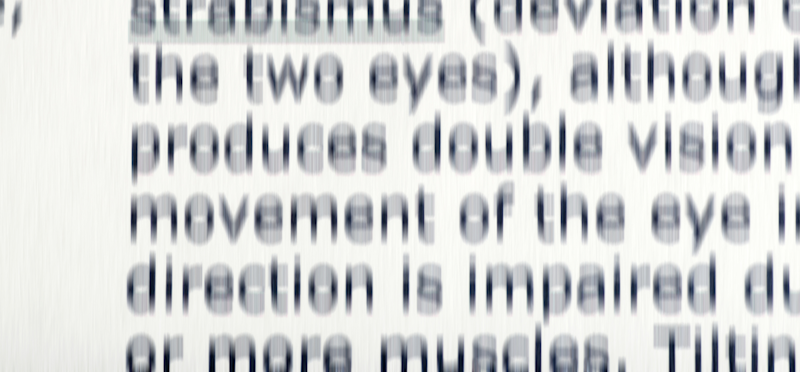
Until 2004, students who struggled learning to read were eventually moved into resource rooms to be given more intense, or at least different, reading instruction. Some eventually were designated learning disabled and given formal Individual Education Plans (IEPs) while others were given accommodations like longer test times, having tests read aloud to them, etc.
Two Models, The Discrepancy Model and Response to Intervention
The operating model up to that point was the Discrepancy Model, which specified that a student had to be a certain number of months behind the norms (his peers, essentially) before getting special help. In some cases, that time period was up to two years. So, in short, your child had to be reading at a first grade level when his peers were third graders. Clearly, this was too long to wait, and it led to a rejection of the Discrepancy Model at the federal level in a 2004 law.
The new model was the Response to Intervention model, or RTI. Again, this was a federal change, and didn't necessarily filter down to all the individual states, nor to the school districts within each state. The RTI model had as its purpose shortening the time before an intervention was attempted. Plus, the interventions were supposed to have some supporting evidence of effectiveness.
What About the Dyslexic Child?
First of all, if you suspect your own child is dyslexic, you might have already found that it is difficult to get your child's school to use the word “dyslexia.” Schools treat dyslexia as a medical issue, that is, as a strictly medical diagnosis of a condition over which they have no direct control. In that sense, dyslexia is treated like a broken leg, or asthma, or 20/200 vision in one eye.
While the school must often offer various accommodations to overcome the symptoms of medical issues, the issues themselves are not the school’s problem. Fixing them falls on the parents, whether that means buying a prescription, paying for a cast, or getting vision needs addressed.
To avoid using the word dyslexia, schools must find some other way (within the bounds of existing law) to tell you that your child isn’t learning to read as easily as his peers but without telling you that he’s probably dyslexic. But, still, they do think he’s dyslexic.
They see case after case after case, most presenting similarly. In smaller rural schools, the experienced teachers even know which preschool kids are most likely to be dyslexic because they taught the parents a couple of decades earlier. Dyslexia tends to run in families and experienced teachers are usually aware of that.
Getting the News That Your Child is Dyslexic
So, how does the school let you know that your child is in trouble? Eventually they test his reading skills and report the results to you, often results that you've long expected will be coming. Of course, you want something done about it. That’s when you find yourself confronted with policies again. Those policies are adopted by your school, directed to a large extent by your state, and influenced by federal education law.
But note that I wrote "getting the news that your child is dyslexic" and not "that your child has dyslexia." That was intentional. Dyslexia is one of those conditions that are diagnosed by checking off boxes on a list of symptoms, similar to an ADHD diagnosis, or even a diagnosis of a psychological condition. You can't observe it directly with, say, a blood test.
But your child might not have dyslexia; he might just be exhibiting the symptoms of the condition that we call dyslexia. And it turns out that, in a considerable percentage of cases, the main symptom of dyslexia, an inability to learn to read, vanishes once some undiagnosed vision issues are addressed
Will the RTI (Response to Intervention) Model Help?
The two overriding themes of my website are:
- Excellent phonics instruction should be taught to every child when learning to read.
- A fairly large percentage of students (10-20% in most schools) will struggle with reading (both the learning and the doing) because they have poorly developed vision skills that have gone undiagnosed and therefore untreated.
RTI should help with the phonics part because phonics instruction is now supported by overwhelming evidence of effectiveness, with one exception: While a vision-challenged child might learn phonics, he won't like to read until his vision skills improve. And the answer to improving vision skills is, in my considerable experience, to get the child into vision therapy.
So, Will RTI Help Parents Get Deficient Vision Skills Addressed?
Certainly the Discrepancy Model never did. Under that model we had school nurses, school psychologists, school speech therapists, school occupational therapists, school reading specialists, but, alas, no school vision therapists.
Will we get vision therapists into our schools eventually, under the RTI model? So far, I think the answer has been "not yet, anyway." See, the issue is cost, a cost of several thousand dollars that parents often just don't have. And that assumes that they're fortunate enough to even learn that vision therapy might be the answer to their child's reading problem. Many never do.
But vision therapy now has solid evidence that it's effective and that's the first step in bringing the RTI model into play. Then it comes down to basic fairness. Why should schools be addressing speech issues, psychological issues, and minor medical issues at no charge to parents, but not also address the major reason ten to twenty percent of their first graders are struggling with reading? So far, it's wait and see, but I do believe the time is coming when schools will realize the need to tackle deficient vision skills in their students head on.




